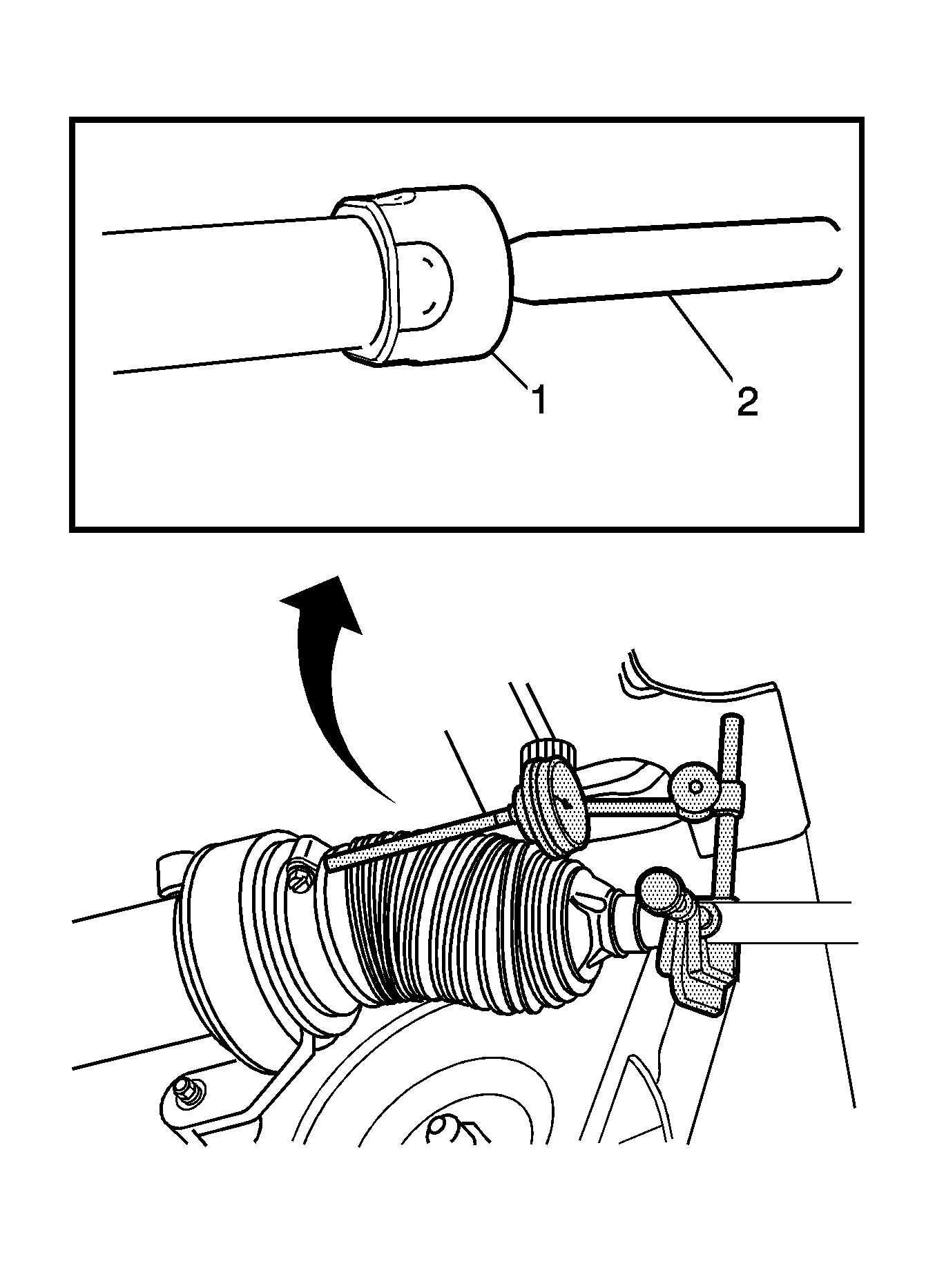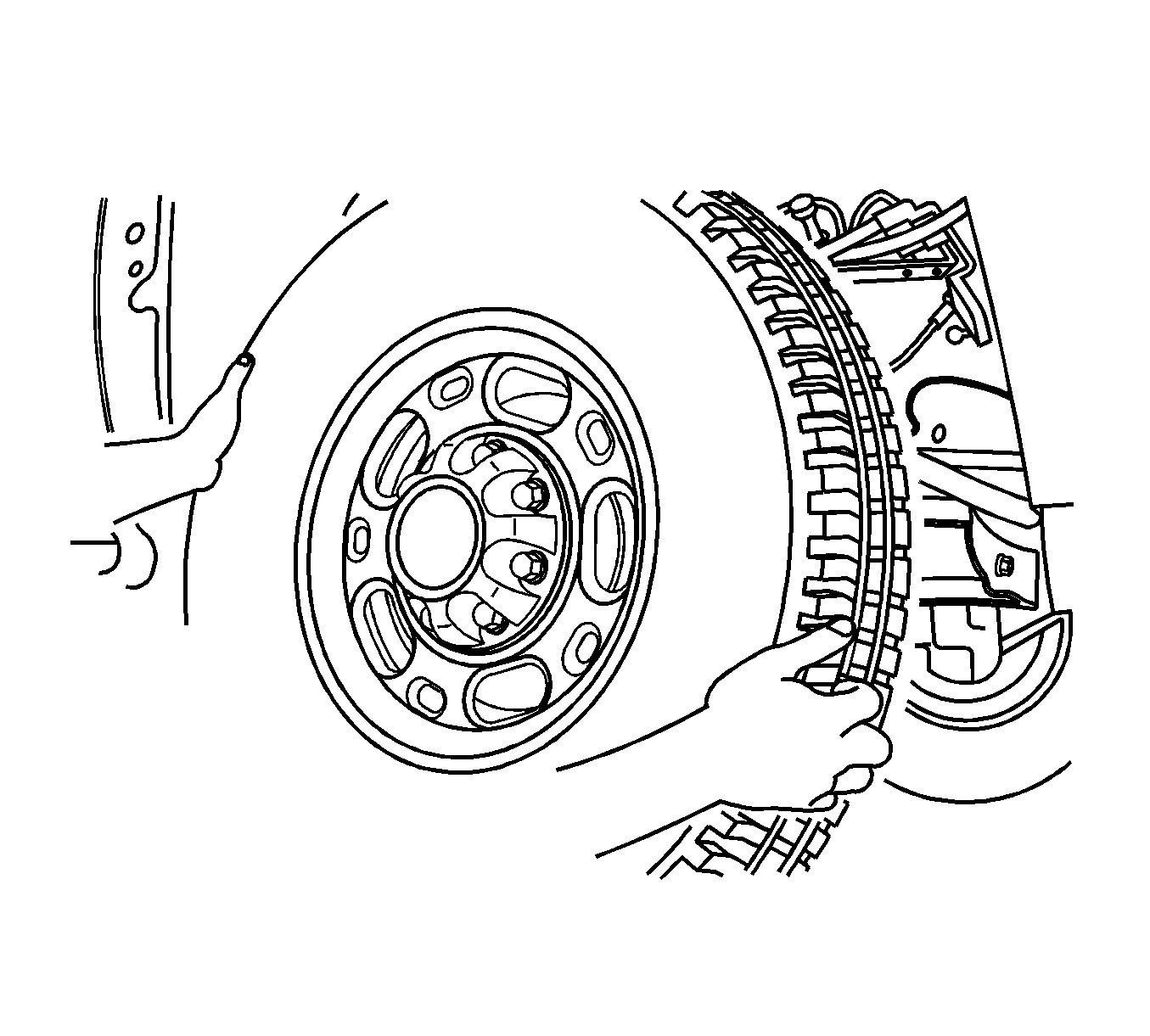For 1990-2009 cars only
Special Tools
J 8001 Dial Indicator Set
- Turn the ignition key to the on position with the engine off.
- With the aid of an assistant, turn the steering wheel to the full stop position and hold it in that position until the test is complete. The tie rod being tested should be inside the steering gear housing seated against the steering stop.
- Raise and support the vehicle. Refer to Lifting and Jacking the Vehicle.
- If there is not a good location for the dial indicator pointer at the steering gear housing, install a large worm gear hose clamp to the steering gear housing over the larger steering gear boot clamp and align the clamp so that the screw can be a location for the dial indicator pointer.
- Install a dial indicator between the inner tie rod (2) and the steering gear housing or the worm gear clamp in such a way as to measure the lash between the inner tie rod and the steering gear housing.
- Grasping the tire at the 3 o'clock and 9 o'clock positions, gently push in on one side of the tire to remove any lash.
- Zero the dial indicator.
- On the same side of the tire previously pushed inwards, gently pull outwards and measure the lash.
- Record the measurement seen on the dial indicator.
- If the measured value exceeds 0.5 mm (0.02 in) then replace the inner tie rod. Refer to Steering Linkage Inner Tie Rod Replacement - Off Vehicle.
- Repeat the procedure for the other side.
Note: This inspection procedure does not supersede local government required inspections that have more stringent requirements.


Note: Only move the tire enough to feel any lash between the inner tie rod and the inner tie rod housing without moving the steering gear rack.
